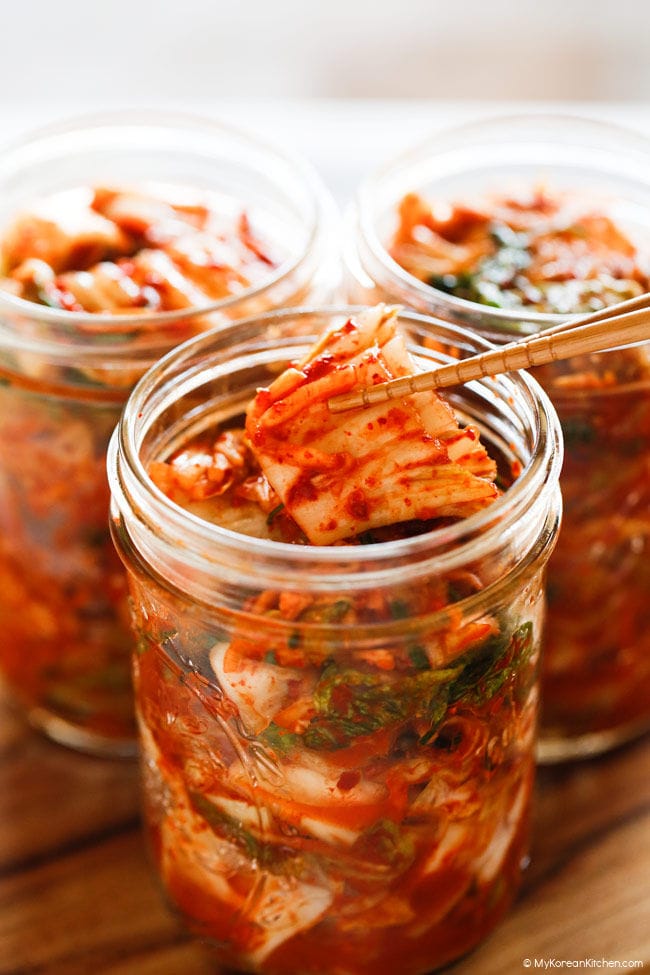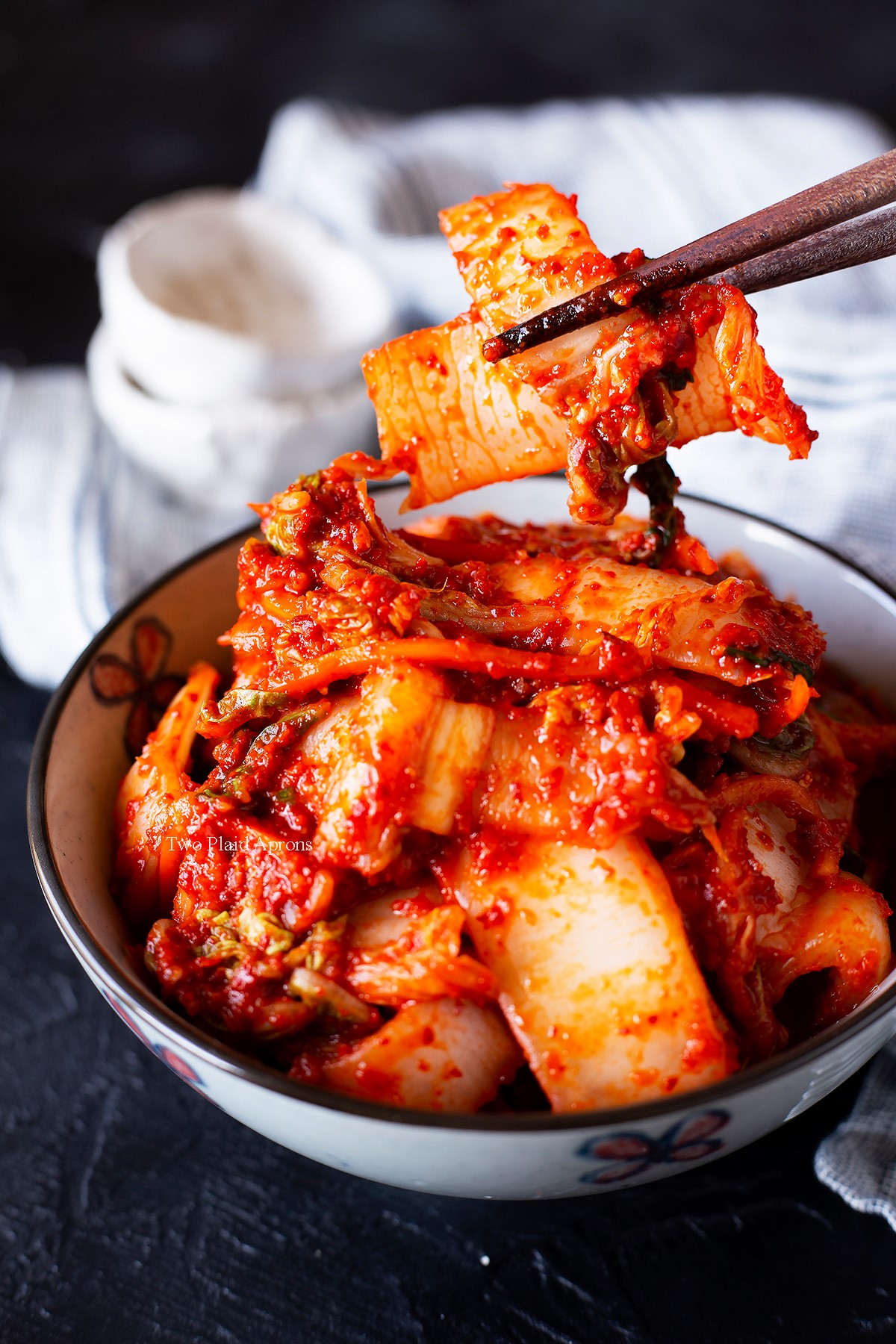KOREAN KIMCHI
THE KIMCHI
The process of making kimchi is not a quick one. If you look for a jar of it in the shops (it has reached western shores in the past few years) it will often be dubbed ‘pickled cabbage’. This is because China is a major exporter of the product and they do not make it to a traditional recipe but use a short cut. The reason? Traditional kimchi is a fermented product. The cabbage is mixed with flavorings such as garlic, ginger and chilli, sealed in jars and left to develop and mature. This can take anything from a week or so to months, depending on the strength of flavour desired, which isn’t so cost effective when mass producing.
When kimchi is made in the traditional manner it has all the benefits of any naturally fermented product. The healthy bacteria found in kimchi are the same as the ones we eat in live yogurt; it is a natural probiotic. As a result however, kimchi is known for its sour taste and pungent smell. The Koreans also like it super-hot which accounts for the redness of the sauce.
When hunting around on the internet I had noticed that many westerners are making kimchi but reducing the fermentation time. This makes sense to me as I’m not sure my western taste buds will be up to the pungent, sour taste of well fermented kimchi. I don’t even like particularly sour yogurt. I do however like the look of the ingredients list, and I love trying new things, so decided to give it a go.
You start by salting the main ingredient of your choice, usually napa cabbage or daikon radish in Korea. Not being able to get hold of either of these ingredients I opted to substitute the cabbage/radish with pak choi. The salting has the double effect of softening the pak choi and drawing out some of its water. Next it is simply a matter of thoroughly rinsing the salt off, adding the rest of the vegetables and the marinade ingredients and stuffing it into a wide brimmed glass jar. Traditionally you then leave it on the kitchen unit for 12 hours or so to start fermenting. After that you simply pop it in the fridge where, if you wish to make the traditional version, it should keep indefinitely, changing and maturing as time goes on. I, with the intention of eating it within the next few days, just popped mine straight into the fridge.
This kimchi is quick and easy to make and, in my opinion, totally addictive. The marinade has a lovely deep, savoury flavour and the pak choi tastes fresh but not raw. In my recipe I used tamari instead of the more traditional fish sauce in the hope of getting my fish hating eldest to try it. I also used just a touch of the red chilli sauce – I wanted a gentle glow, not a fireball experience. My favourite ways to eat it are as a relish in a sandwich with some cheese or left-over meat, stirred into some fried rice, served alongside bibimbap (the recipe for that will be along within the next few weeks), or just straight out of the jar. It is honestly that delicious.
RECIPE
For the vegetables
- 4 pak choi
- 1 tablespoon sea salt
- A small pack of radishes (10–12)
- 2 carrots peeled
- 4 spring onions
For the marinade
- 4 cm piece fresh ginger (finely grated)
- 2 cloves garlic (crushed)
- 2 tablespoons tamari/fish sauce
- 2 teaspoons rounded demerara sugar
- 1 teaspoon sriracha chilli sauce (see notes)
Instructions
- Slice the pak choi into 2cm strips discarding the bottom. Wash if necessary. Place the pak choi into a large bowl, sprinkle over the salt and mix with your hands to distribute the salt as evenly as possible. Leave for 1 hour.
- Mix the marinade ingredients together.
- Top and tail the remaining vegetables then thinly slice the radish, cut the spring onions into 2.5cm chunks and, using the peeler, ‘peel’ the carrot into thin ribbons.
- Rinse the pak choi thoroughly and drain well removing as much of the water as possible.
- Place all the vegetables in a clean bowl, pour over the marinade, mix well with your hands and stuff into a 1 litre mason jar. Store in the fridge.



Comments
Post a Comment